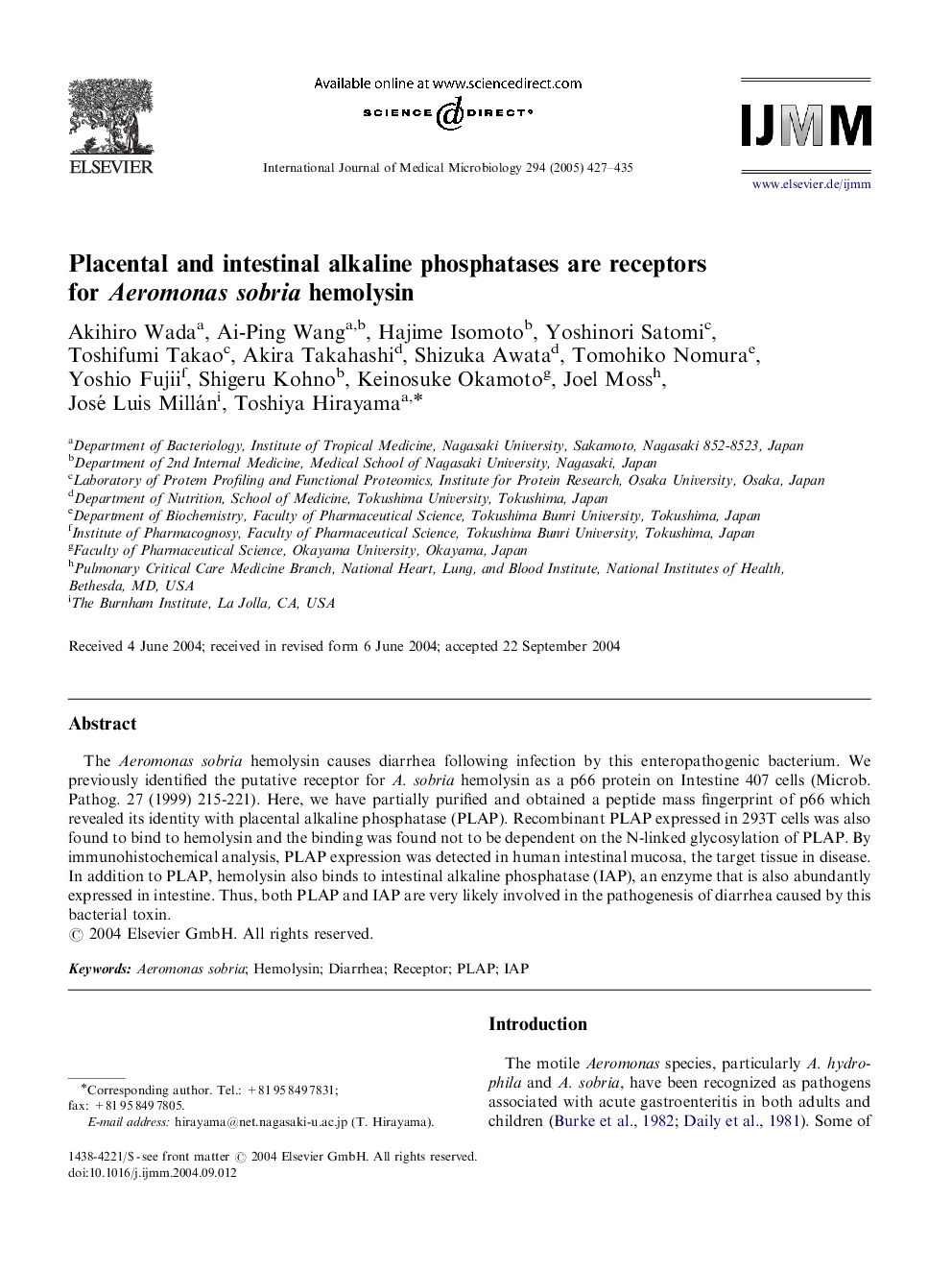| Article ID | Journal | Published Year | Pages | File Type |
|---|---|---|---|---|
| 9899212 | International Journal of Medical Microbiology | 2005 | 9 Pages |
Abstract
The Aeromonas sobria hemolysin causes diarrhea following infection by this enteropathogenic bacterium. We previously identified the putative receptor for A. sobria hemolysin as a p66 protein on Intestine 407 cells (Microb. Pathog. 27 (1999) 215-221). Here, we have partially purified and obtained a peptide mass fingerprint of p66 which revealed its identity with placental alkaline phosphatase (PLAP). Recombinant PLAP expressed in 293T cells was also found to bind to hemolysin and the binding was found not to be dependent on the N-linked glycosylation of PLAP. By immunohistochemical analysis, PLAP expression was detected in human intestinal mucosa, the target tissue in disease. In addition to PLAP, hemolysin also binds to intestinal alkaline phosphatase (IAP), an enzyme that is also abundantly expressed in intestine. Thus, both PLAP and IAP are very likely involved in the pathogenesis of diarrhea caused by this bacterial toxin.
Related Topics
Life Sciences
Biochemistry, Genetics and Molecular Biology
Biochemistry, Genetics and Molecular Biology (General)
Authors
Akihiro Wada, Ai-Ping Wang, Hajime Isomoto, Yoshinori Satomi, Toshifumi Takao, Akira Takahashi, Shizuka Awata, Tomohiko Nomura, Yoshio Fujii, Shigeru Kohno, Keinosuke Okamoto, Joel Moss, José Luis Millán, Toshiya Hirayama,
